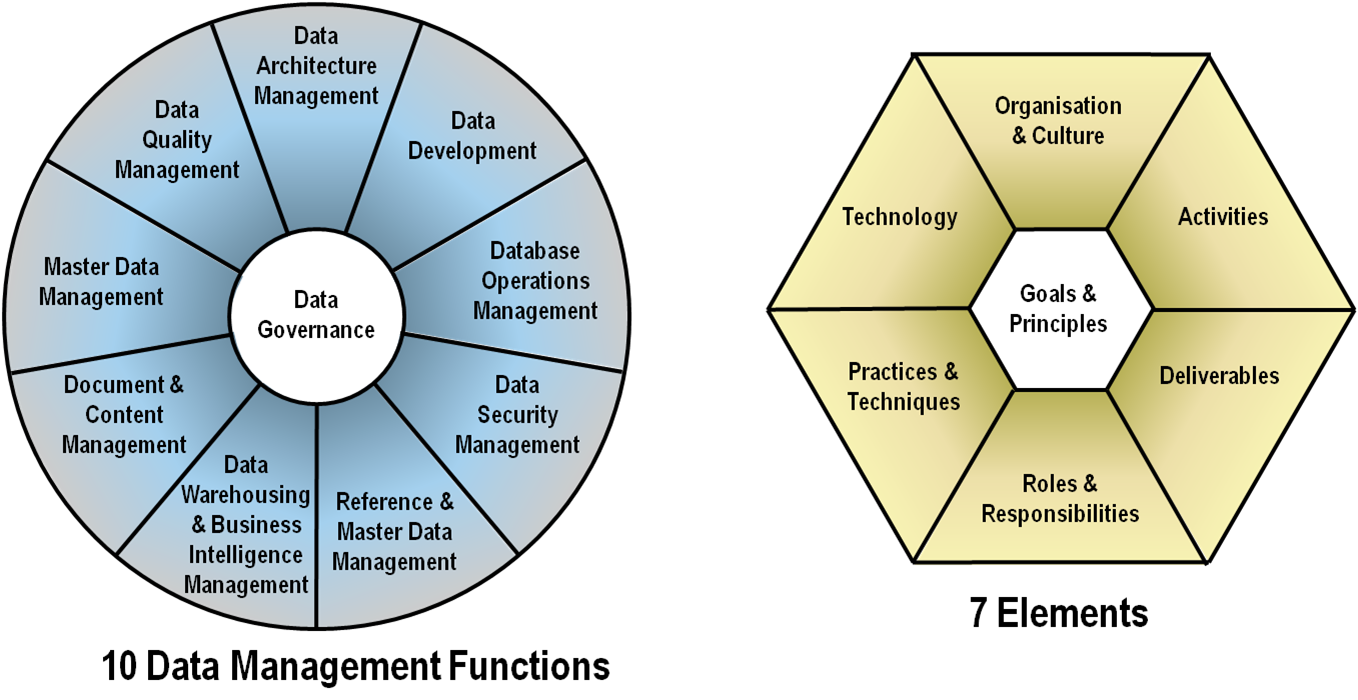 |
| Music |
| Computing |
| Info Arch |
| Theory |
| Practice |
| Glossary |
| Index |
Data Management |
|
The Data Management Association (DAMA) defines it as "Data Resource Management is the development and execution of architectures, policies, practices and procedures that properly manage the full data lifecycle needs of an enterprise".

DAMA divides the discipline of Data Management into 10 "Functions", each of these is described by documenting its 7 "Elements".

An alternate approach is to describe the tasks, user roles, locations, repositories and applications involved in handling each data category.
Clearly documenting the user's roles in the management of information is often a key to ensuring data is handled in a consistent way. For most purposes it is important to define the participants that play four crucial roles:
- Data Editor: The person that validates, creates and edits the data
- Data Steward: The person that holds the data, usually they will take care of the data, ensuring the data consumers obtain exactly the data approved by the data owner
- Data Owner: The person that approves data before it is published for the eventual audience
- Data Consumer: A person that uses the data without editing, correcting or modifying it
The persons playing these roles will typically vary from one data category to the next. A clear description of how these roles are fulfilled will usually require definition of the repositories, tasks and locations.
Relation to Information Architecture
While it is possible to define the Information Architecture without discussing the data management this is usually not a good idea. All systems exist in a "landscape" of information flows and business activities, if these are not clarified then they will tend to shift the existing data and corrupt the definitions leading to data rot. A clear description of the organisation's policies will mean that the later inevitable changes will complement rather than compete with the systems.
Links to this page
The following pages link to here: Capability Maturity Model, Data Category, Data Repository, DMBoK, Enterprise Architecture